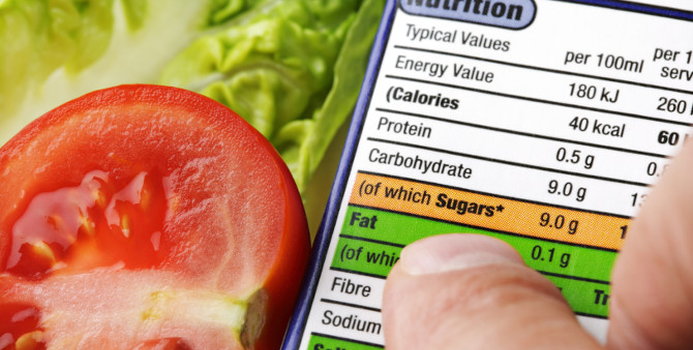The majority of people who are practicing healthier eating habits look at food labels for one reason or another. Whatever the reasoning is, most consumers appreciate the understanding of the nutrition label to enable them to make better choices in the food selection process. Choosing healthy foods is beneficial for overall health.
Six Components of a Nutrition Label
For a general overview, concentrate on the following 6 categories to gain a better understanding of what to look for on the nutrition label:
- Nutritional Facts Panel
- Serving Size
- Calories and Calories from Fat
- The Nutrients
- Daily Value Percentage
- Footnote
Below is a sample nutrition label for reference and format purposes:
- Nutrition Facts panel: The information in the main or top section of the nutrition label is the Nutritional Facts Panel.
- Serving Size: Refers to the serving size and the number of servings per package, bottle, container, etc...
- Calories and Calories from Fat: States the number of calories per serving and the number of fat calories contained within the serving.
- Nutrients: A list of nutrients found in the subject food item and the daily value percentage inclusive of the serving size.
- Daily Value Percentage (% Daily Value) provides the recommended dietary requirements for each important nutrient.
- Footnote: The footnote states the recommended dietary information for the important nutrients; including fats, saturated fats, cholesterol, sodium, carbohydrates, dietary fiber, etc...Footnotes generally appear on larger packages and appear in the same context on every label.
Importance of each Category on the Nutritional Label
The single most important piece of information on any food nutrition label is the serving size and the number of servings in the package. It is the basis for all the other data, including calories and nutrients.
Calories are the second most important factor to look at on the nutrition label, because caloric intake measures how much energy a person receives from a serving of food. The number of servings consumed determines the number of calories to calculate for weight management purposes.
Saturated fat, trans fat cholesterol, and sodium are nutrients that should be limited because they increase health risks.
The Daily Value percentage (% Daily Value) is well founded information because it includes recommended levels of nutrient intake based on a 2,000 or 2,500 calorie diet. It does not, however, have a direct impact on serving or portion size and caloric intake; both factors which effect weight loss and weight gain.
The footnote is located on the bottom of the label which states, "% DVs are based on a 2,000 calorie diet." It is a requirement for this statement to appear on all food labels.
The Nutrition Fact Panel is the overview and top portion of the label. It is a visual aid to compliment all the specific nutrient related items.
Ingredient List
The final thing to look at on a food label is the ingredient list. The ingredients are listed in descending order by weight, meaning that the first ingredients listed make up the largest portion of the product. Therefore, it is important to determine if the first few ingredients contain healthy nutrients. An example would be whole wheat, brown rice, or whole grain verses enriched flour or white rice. The key words for the ingredients can help eliminate unhealthy food choices.
Understanding Nutrition Labels
Reading and understanding what to look for on a nutrition label is an advantage to all consumers. The ability to select foods that are higher in fiber and whole grains, lower in cholesterol and calorie intake, and moderate in carbohydrate counts is an important skill. Serving size, number of servings per container/package, calories, fat, carbohydrates, proteins, vitamins, and minerals make a difference for healthy eating. Knowledge is power.
Healthy eating habits and good nutrition values require discipline. Knowing what to look for on a nutrition label adds value to the decision making process. Statistics show that portions and serving sizes have the greatest effect on weight loss and obesity. Why not take the time to evaluate nutrition values prior to purchasing or eating certain foods? The end result would be a healthier and well balanced lifestyle.



